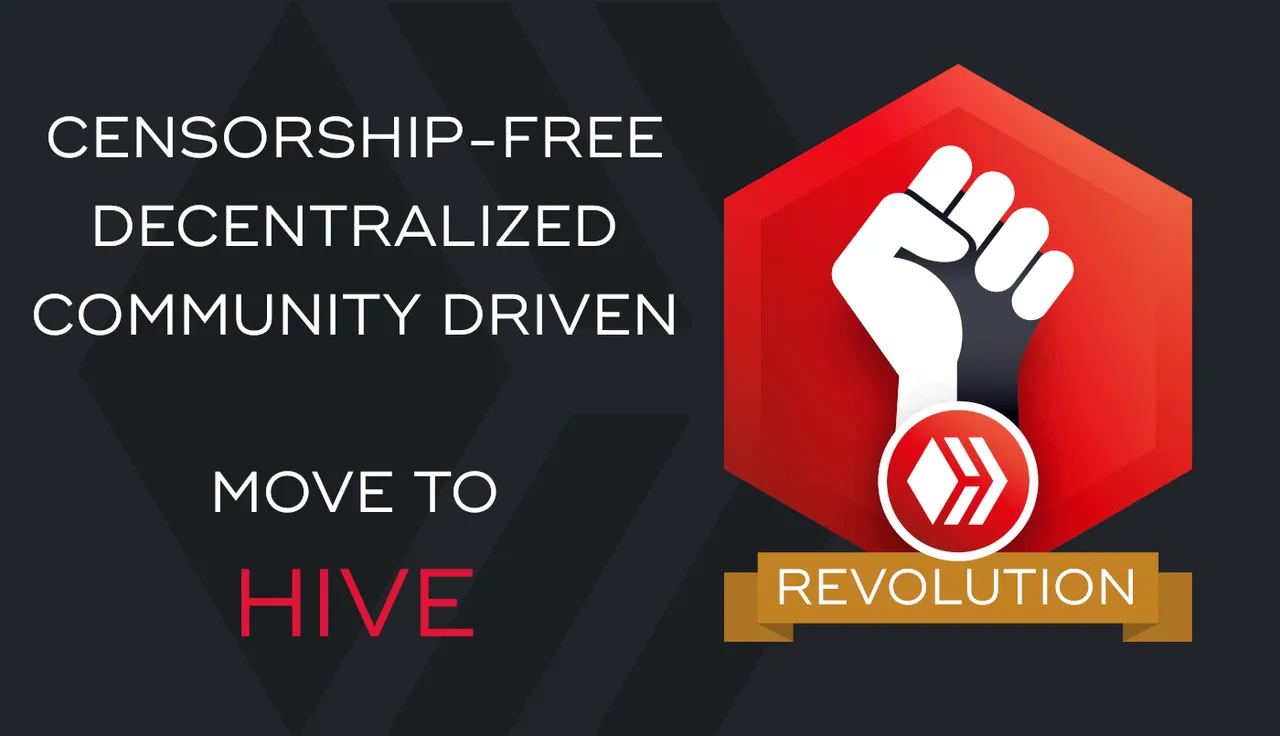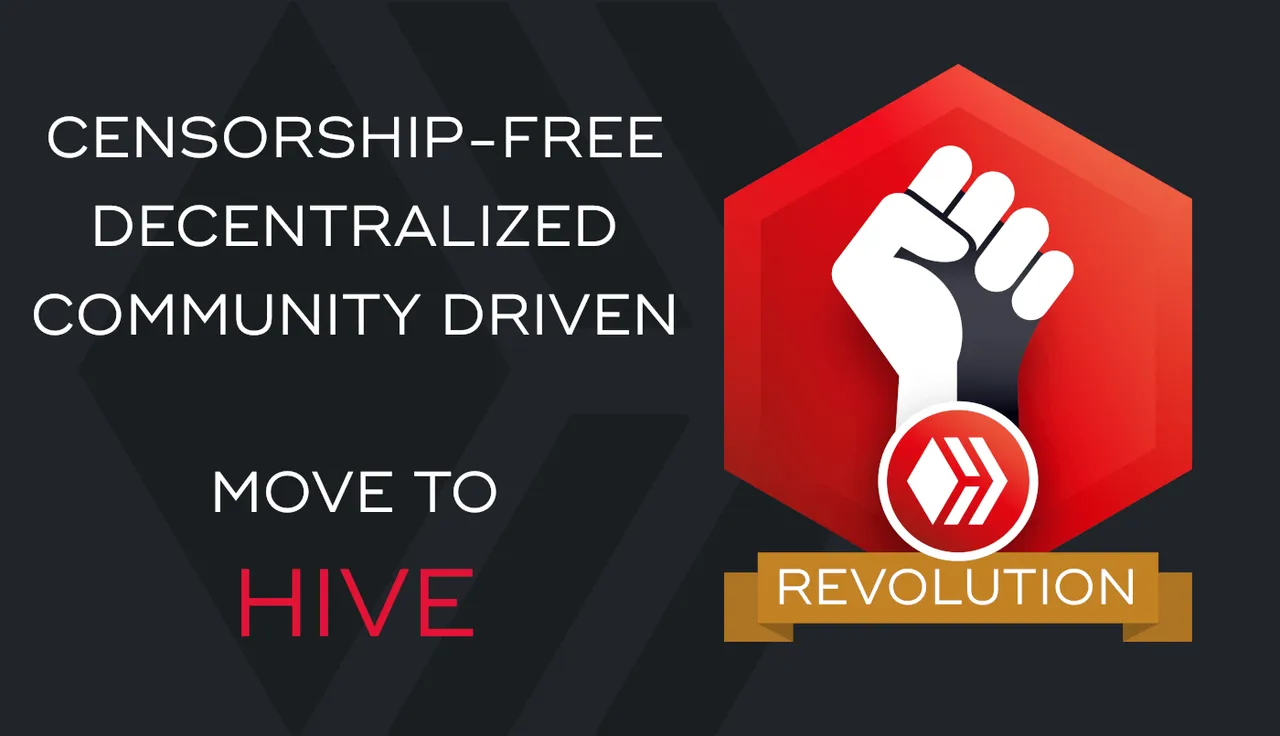Hi Everyone,

At the moment Steem is bid bot crazy. I recently opened Bot Tracker to a long list of bid bots. Most of the bots have very little Steem delegated to them but several of them have a massive value of delegated Steem. Bid bots such as postpromoter, appreciator, and smartsteem have between 2.5 million and 3 million delegated steem power and upme and buildawhale have over 1.5 million delegated steem power each. There are several other bots with around 1 million in delegated steem power. Many of Steem’s most invested accounts have delegated a very large share of their Steem Power to bots.
What are bid bots?

I would call it a form of vote selling service. Content creators transfer SBD or Steem to a bid bot account as a bid for an upvote for a post of their choosing. Bid bots generally give out their upvotes once their voting power reaches 100%. For many bid bots that is roughly every 2 ½ hours. This is about the required time to recover from a full upvote. The value of the upvote that a content creator receives depends on the value of their bid, the value of the bids of other bidders as well as the conditions of the bid bot (this varies from bot to bot).
For example, if a bid bot has a 100% upvote value of 200*, an account bids 50 SBD and the value of all other bids is also equal to 50 SBD, the post nominated for the upvote should receive an upvote valued at 100 (200×50/(50+50), assuming there are no other conditions. Some bid bots have conditions in place regarding return on investment (ROI). Under these circumstances the upvotes received will be different than if unrestricted. If a bid bot has a maximum ROI of 10% and we assume the same value of bids; a 50 SBD bid should now give the bidder approximately a 73.34 upvote value (50/0.75×1.1=73.34); the ROI considers 25% on curation,
(*I have not used SBD for the value of the upvote as the value of upvotes are not exactly worth the SBD value stated because of the broken SBD to US dollar peg. I will explain a little later in the post.)
Bid bots are intended to be used to help content creators to promote content. The upvotes provided by the bots raise the payout value of the post and moves the post higher up the ‘hot’ and ‘trending’ pages. This provides posts with greater visibility. High quality posts should receive more and higher upvotes. Lower quality posts should receive less and lower value upvotes. Spam posts are more likely to receive downvotes. If the above holds true, bidding on bots should favour high quality content. Is this actually happening?
Who benefits from bid bots?

I believe there are four obvious categories of people that could benefit the most from bid bots. They are as follows:
- Bidders (content creators)
- Major investors in Steem (Orcas and Whales)
- Delegators of Steem Power to bots
- Bot owners
Bots provide content creators with an opportunity to promote their content on ‘hot’ and ‘trending’ lists. When a post is created, Steemit allows for up to 5 tags. Each tag has a ‘hot’ and ‘trending’ list. There are also general ‘hot’ and ‘trending’ lists. The general ‘trending’ list is currently the front page of Steemit and busy.org. This list is very important to Steem as this is most likely the first impression potential and new users have of Steem. The quality and popularity of the content on the front page plays an important role in the success of the platform.
Getting on the front page of Steemit should be considered a great accomplishment to any content creator. Gaining exposure through bid bots should provide the opportunity to receive many and high valued upvotes so that an excellent or very popular post can reach the first page. This should be very profitable for the content creators and a strong incentive to produce quality work. If quality content is reaching the front page, that is good for Steem and in particular the largest investors in Steem.
Delegating Steem Power to bots should be great for delegators as well. Delegation offers considerably higher rewards than curation and also does not require work to find good content. The extent of the rewards to delegators is dependent on the agreement delegators have with the bid bot owner/operator.
Bot owners stand to gain from curation rewards from the very high value upvotes given out approximately 10 times a day. I don’t know how much money bot owners are making from curation rewards or other fees. I cannot say for sure if the bot owners are keeping all the curation rewards or if some are given to delegators. Several of the bot owners/operators are also witnesses and running the bots has helped them gain witness votes.
So how is this all working out?
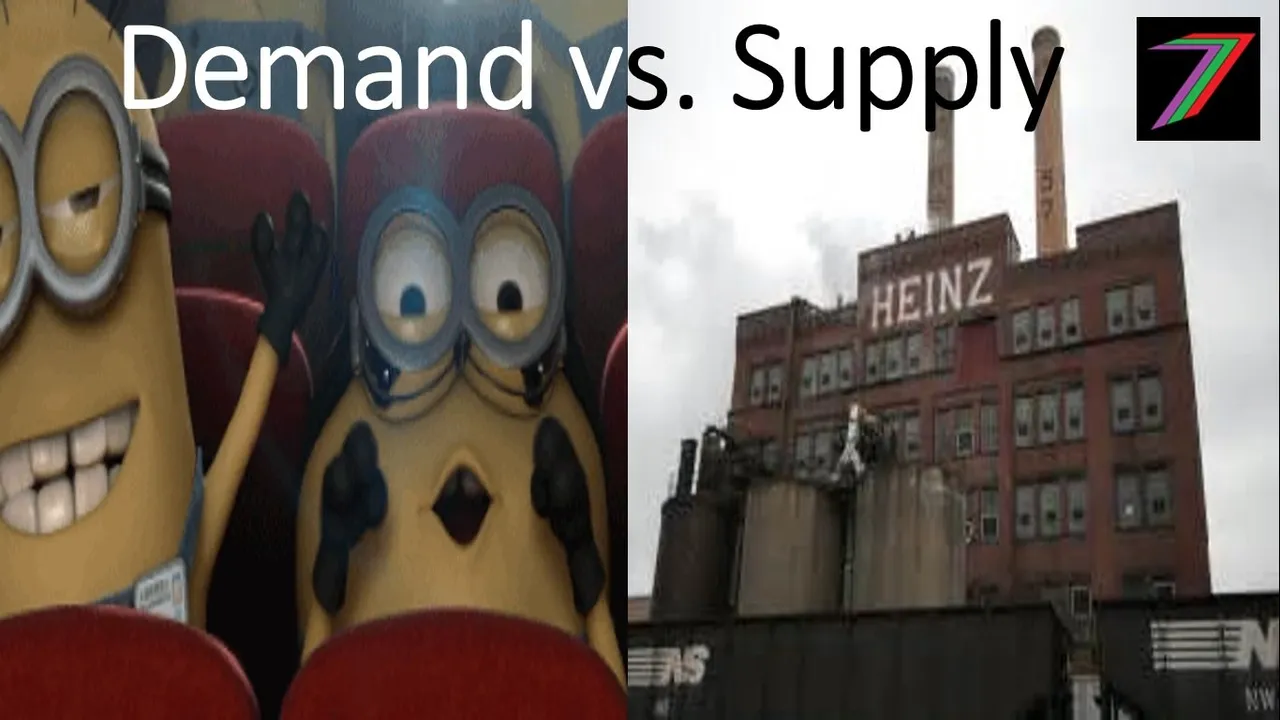
If we turn the clock back to the second half of 2017, I would say things are working out quite well. We are now in July 2018 and my answer is very different. So what exactly is happening? Lucky for all of you, I am an economist and I can provide a reasonably informed and analytical explanation of the current circumstances.
I am going to hit you with a bit of economics. I will describe the existing situation in the context of a double prisoner’s dilemma (game theory) and market failure (think lemons and peaches) and even adverse selection (selection technique that gives you exactly the opposite to what you want).
Prisoner’s dilemma for content creators

Let me start with prisoner’s dilemma from the perspective of the content creator. I briefly covered prisoner’s dilemma in a post back in January this year. I believe I can shed more light on the subject now as we have moved forward. What is a prisoner’s dilemma? Prisoner’s dilemma exists when each person’s dominant strategy results in the worse outcome for the group. In the original prisoner’s dilemma game, the dominant strategy of both the accused is to confess to the crime they have committed. This results in both parties getting arrested.
So how is bidding for upvotes a prisoner’s dilemma? Let’s start from the beginning where nobody is bidding for upvotes and bid bots have just been created. Bidding for upvotes is better than not bidding for upvotes. The upvotes allow for greater exposure, as explained earlier in the post, and the positive ROI also benefits the bidder. Those that do not bid for upvotes get less exposure and therefore get left behind even if they are producing better content. The natural response is for those not using bid bots to switch to using bid bots. This now creates a greater demand for bid bots.
The market responds by providing bid bots, as I mentioned earlier, delegating to bid bots earns more Steem than curating. Eventually, the majority of content creators are using bid bots. This cancels out the initial advantage of just a few people using bid bots. The difference this time round is that content creators are competing for less rewards as voting power is tied up in delegations to bots. If nobody used bots to begin with, all content creators would be better off. Unfortunately, the current dominate strategy is to always use bid bots. This is to either get ahead or to catch up. Hence, we have our prisoner’s dilemma for content creators.
Prisoner’s dilemma for investors
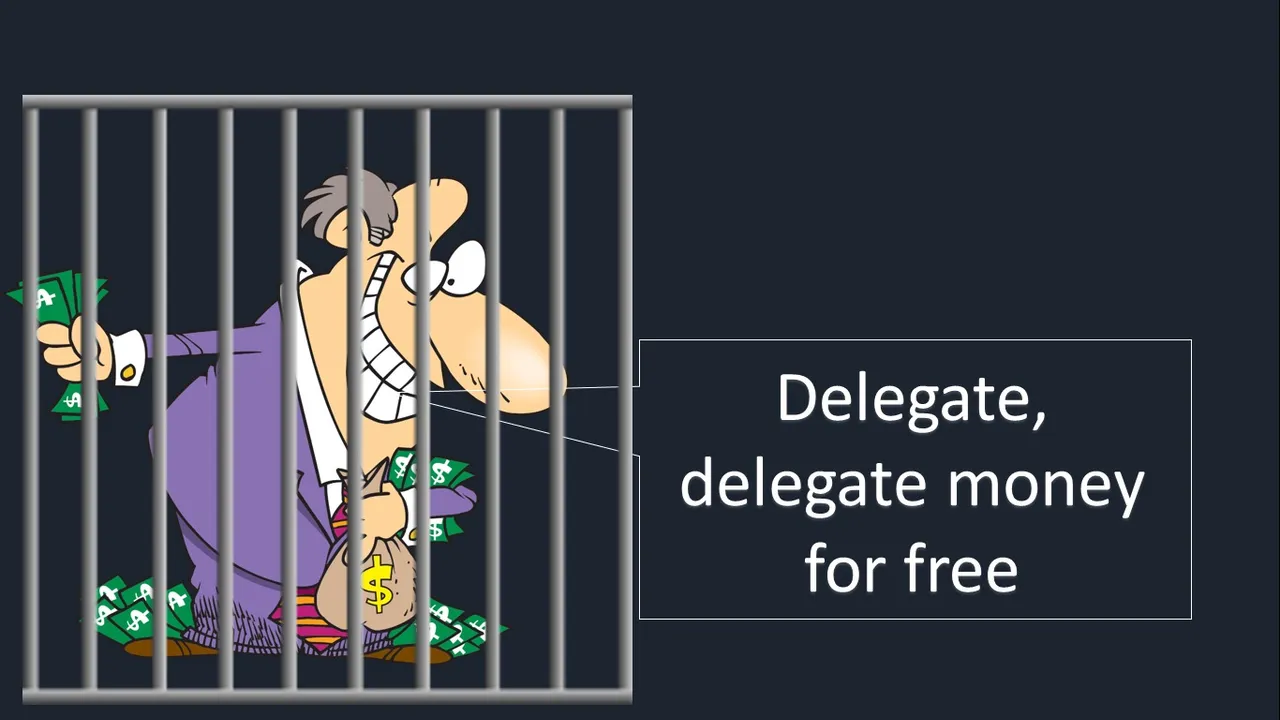
I have not discussed in my previous posts the prisoner’s dilemma that investors in Steem also face. The investor’s prisoner’s dilemma is possibly more compelling when we consider market failure. The arrival of bid bots offered investors new opportunities to earn Steem. It also offered investors a very easy way to earn Steem. Curating for large investors typically offers less than 25% of an upvote. Delegating to bots offers possibly 3 times that; I can’t confirm actually numbers but this is just a rough idea I have based on information I have seen on bot related websites.
The rewards from delegating to bots is closer to self-voting than ordinary curating. Earning from delegation also does not have the risk of getting downvoted as that is passed onto the content creator. The high demand from content creators for bid bot upvotes prompted the creation of more bid bots. Investors saw this as an opportunity to earn more Steem. Delegating to bid bots became a dominant strategy for investors. This does necessarily mean we have a prisoner’s dilemma but it means there is a preferred outcome to delegate to bots. Potentially, there is an equilibrium where all active Steem Power ends up with the bots; at least we have not reached that yet.
So how do we have a prisoner’s dilemma? Large amounts of Steem Power is tied up in bots. The power to determine the content that reaches the ‘trending’ pages is removed from the curators to those bidding the highest for upvotes. There are so many bid bots that someone can easily bid themselves to number one on trending. Using bids to get very high on the trending page is becoming quite common. This combined with a lack of incentive and for many a lack of Steem Power to effectively downvote, has resulted in posts upvoted by bid bots remaining on the trending page. Most of these posts are not very low quality but they are certainly not the highest quality or most popular posts that would reach through genuine curation or through market forces. I will support this statement later in the post.
There is the additional problem that new and potential users do not understand the bid bot system and believe the exceptionally high payouts on posts are what the authors are actually earning for their content. @ned was interviewed a few months back and one of the first things the interviewer observed was the lack of quality content on the Steem platform. There is better content on the platform but that content often does not get the attention it deserves. I believe the high bid bot upvotes is pushing higher quality content out of the way. Prior to the arrival of the bid bots, the best content also generally did not have a clear way of emerging to the top. Self-voting and circle voting were common. I acknowledge these issues but I will save them for another post.
Market failure
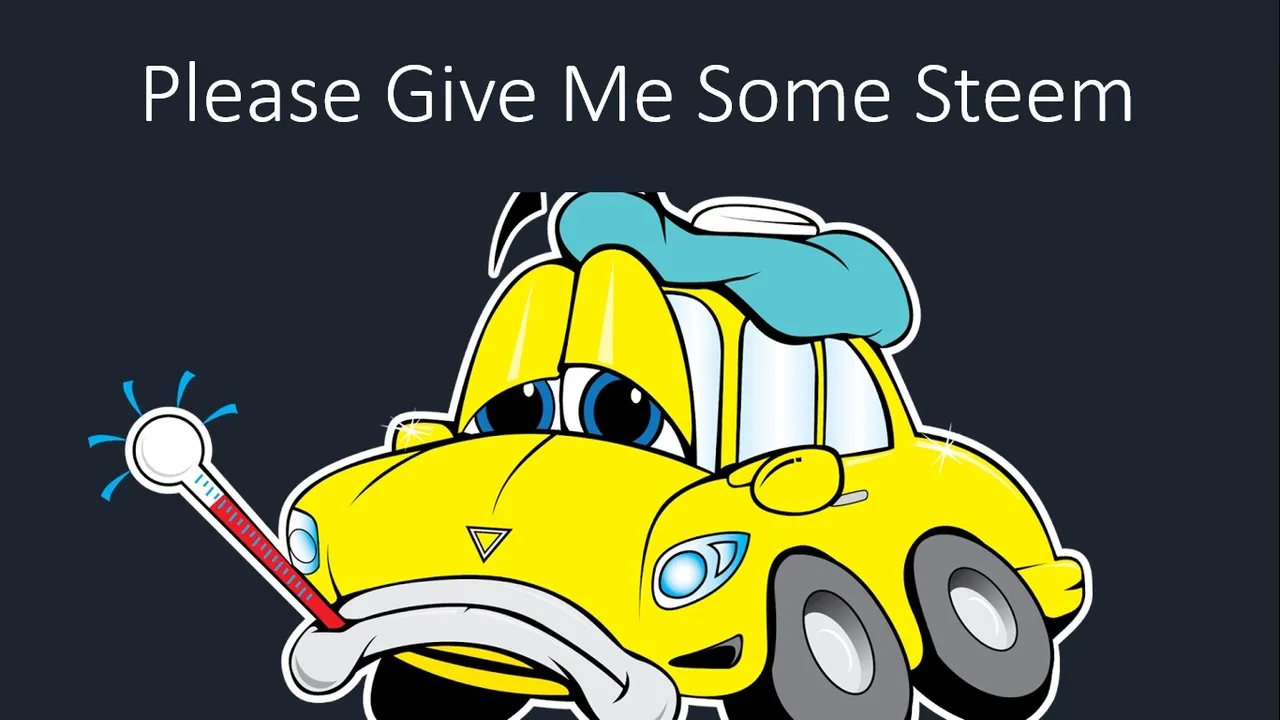
So far I presented a strong case of prisoner’s dilemma for content creators and a strong inkling of a case for investors. This next section of the post regarding market failure is very important as it will portray a much strong position of prisoner’s dilemma for investors.
There is the famous case of market failure demonstrated by Akerlof’s lemons and peaches. Akerlof’s example referred to used cars. A lemon is a used car with a history of breaking down. A peach is a used car with a history of not breaking down. Used car salesmen do not reveal the history of the car to potential buyers (well they didn’t in Akerlof’s example anyway). Potential buyers not knowing the history will consider buying a used car a risk and therefore have a lower willingness to pay. This lower willingness to pay will be less than the price that the seller of a peach car is willing to accept. Therefore, only lemon cars are sold. Hence, we have a market failure for peach cars.
Do we have market failure in regards to quality content on Steem? I believe we are beginning to see the signs of market failure. What could cause market failure for quality content on Steem? I believe lack of genuine curation will cause market failure. What is genuine curation? In my opinion genuine curation is upvoting content that you like and as is unbiased as possible from the opinions of others. Upvoting whatever is popular on trending is not genuine curation. Upvoting someone just because they upvoted you is also not genuine curation.
Genuine curation could involve looking through the tags. A good place to start is with the tags that you like to use. Search through the respective ‘hot’ and ‘trending’ lists for those tags. Once you have found a good post, give it an upvote and leave a nice comment. You can also look at the tags that the post you liked used and use these tags to look for content that you like. You should not feel obliged to give high percentage upvotes. A very low upvote and candid feedback can be part of genuine curation as well. While looking for content you like, you may come across content that you believe is abuse. You can either report this content to @steemcleaners or downvote it or both.
As mentioned earlier in the post, curation rewards less Steem and is more work than delegating Steem Power to bid bots. Hence, the number of curators and the amount of Steem Power that can go into genuine curation is greatly reduced. Lack of genuine curation can cause two problems that can lead to market failure for quality content. First problem is that good content does not get recognised and rewarded accordingly. The second problem is that bad content or abuse does not get found or punished.
A little experiment

Bid bots provide an avenue for good content creators to get exposure, would that prevent market failure for quality content. The answer to that is ‘yes’ if sufficient curation exists to continue providing rewards to this good content. I have selected the trending lists of 8 tags and I have monitored the rewards of several posts on those trending lists to get an idea of the value that exposure is actually getting these posts. The tags I have selected are as follows:
- Funny
- News
- DLive
- Dtube
- Sports
- Economics
- Literature
- Jokes
I have divided the content that has reached these trending lists ‘organically’ from the content that has reached these trending lists through the use of bid bots. In the screen shots below I have labelled the posts that used bid bots and those that did not. The purpose of this exercise is determine the extent exposure on a tag trending list adds to the rewards and upvotes of a post. Though I feel that including how a post got on a trending list adds value to this analysis.
‘Funny’ is one of the more popular tags. To get on the ‘funny’ trending list for most content creators is going to require a reasonably hefty bot upvote. So what in terms of exposure is that upvote getting the content creators? Below I have four posts that were very close to the top of the ‘funny’ trending page.
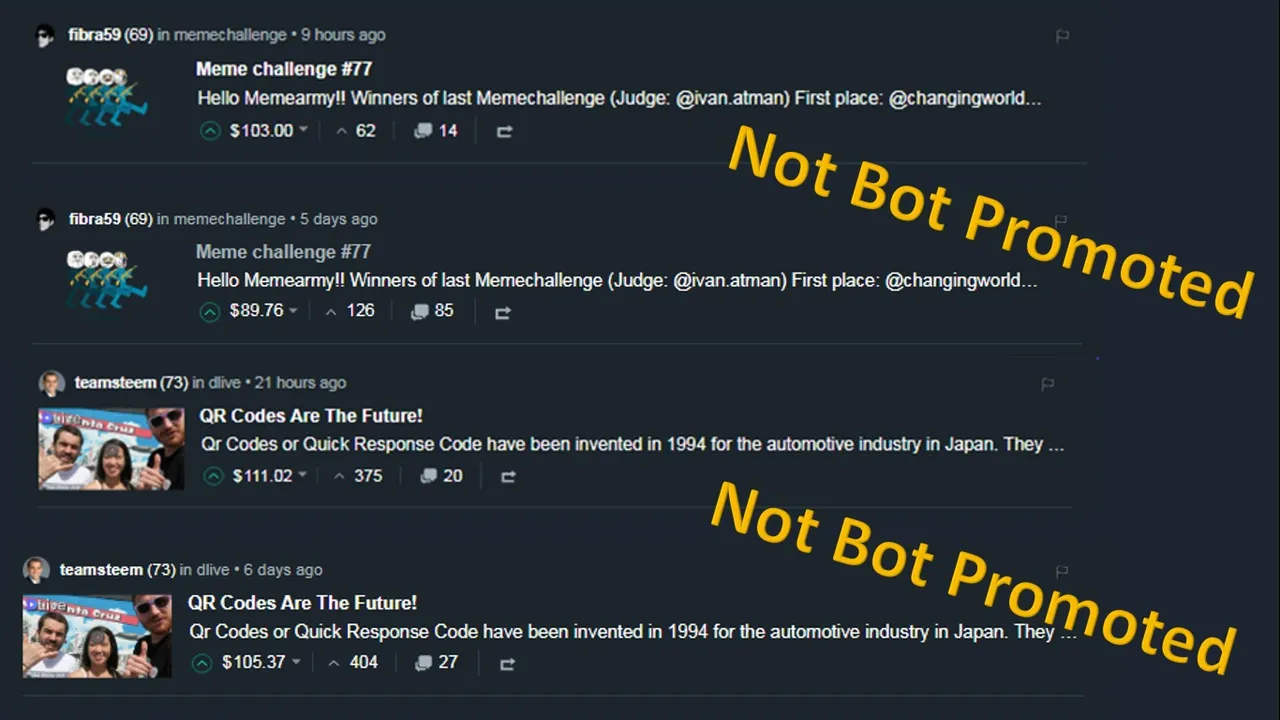

Meme Challenge #77 had, after 9 hours of being posted, 62 upvotes, 14 comments, and a value of 103. Meme Challenge #77 had, after 5 days of being posted, 126 upvotes, 85 comments, and a value of 89.76. The payout for this post has dropped. This can mostly be attributed to the falling price of Steem. The additional 64 upvotes have added very little to the posts rewards. There is a positive indication that the post has gained some attention but it is unclear how much of that attention was obtained from being on the tag trending list. It is also important to remember that if a post is on the ‘funny’ trending tag then it is most likely on the other tag trending lists as well.
‘QR Codes Are The Future?’ had, after 21 hours of being posted, 375 upvotes, 2 comments, and a value of 111.02. ‘QR Codes Are The Future?’ had, after 6 days of being posted, 404 upvotes, 27 comments, and a value of 105.37. This post was authored by @teamsteem, he is one of Steem’s most popular content creators. This post was not promoted using bots but most likely would have been propelled by either automated upvotes or exposure on feeds. It does not seem that appearing on a tag tending list has given substantial attention to a post written be reputable content creator.
I have selected two more posts from the funny tag. One from @meme.nation and one from @rodsquad. The numbers for each of these posts do not appear particularly encouraging. Both these posts used bid bots to get on the trending lists
Another popular tag I have selected is ‘News’. Of the four posts I have been following only one post had higher rewards after considerably exposure on the tag; this is a post by @jrcornel. The number of upvotes for the other posts increased but mostly by less than 20% and the rewards added did not cover the loss from the falling price of Steem. The bid bot promoted post fared slightly worse than the other three posts.

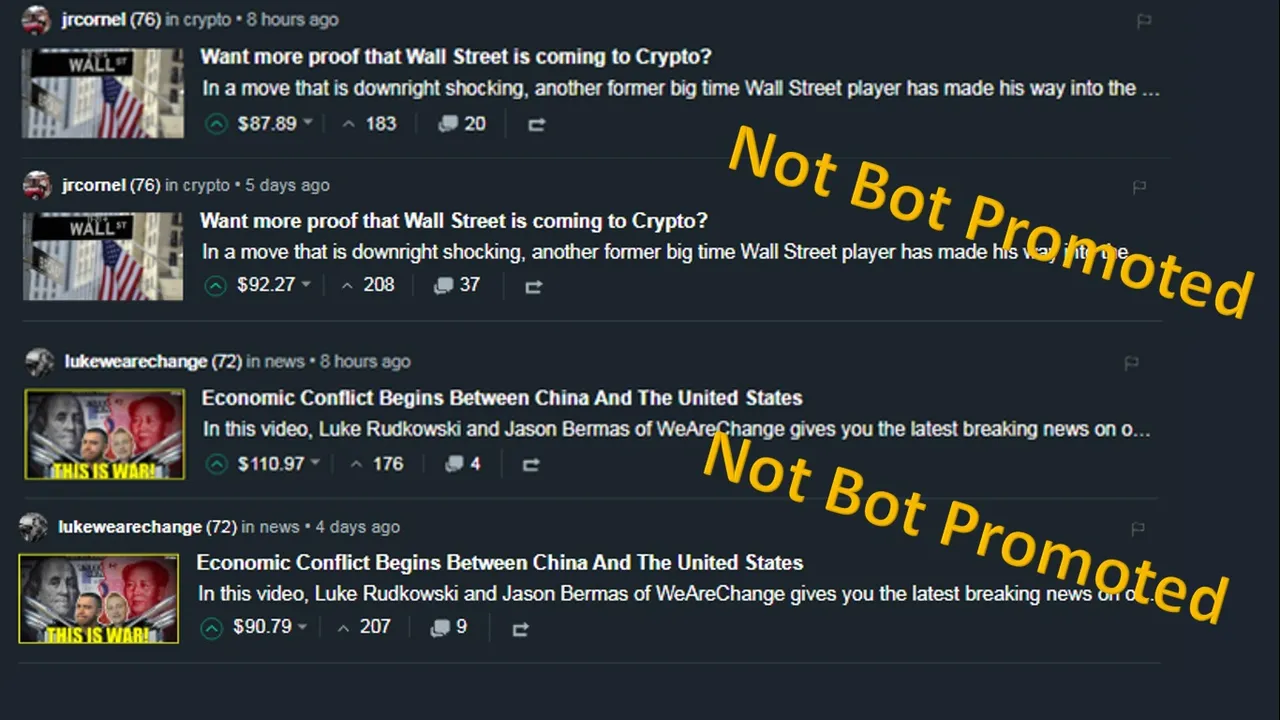
I have also followed another 8 posts trending on Dlive and Dtube. All 8 posts could not gain sufficient rewards from upvotes to cover the cost of the falling price of Steem. The increase in the number of upvotes is also small compared to the number of upvotes these posts received prior to reaching the trending tags. The 2 bid bot promoted posts trending on DLive fared slightly worse than the 2 that were not bid bot promoted.
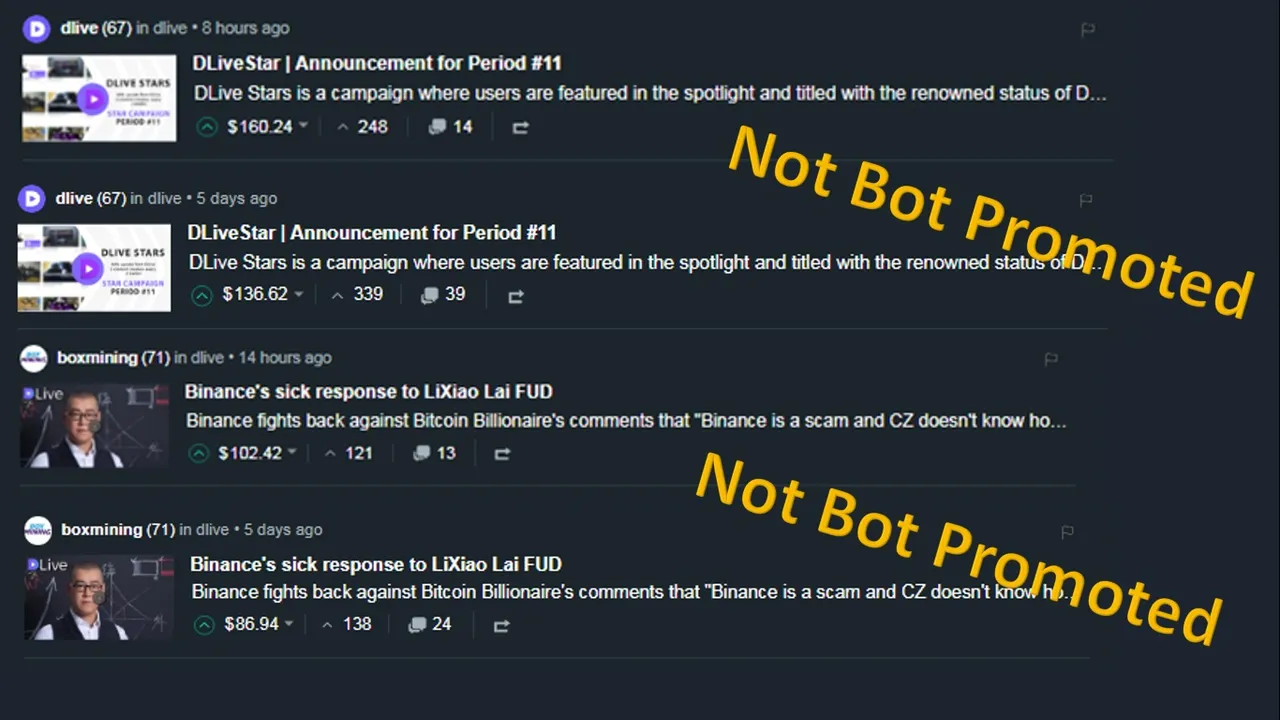

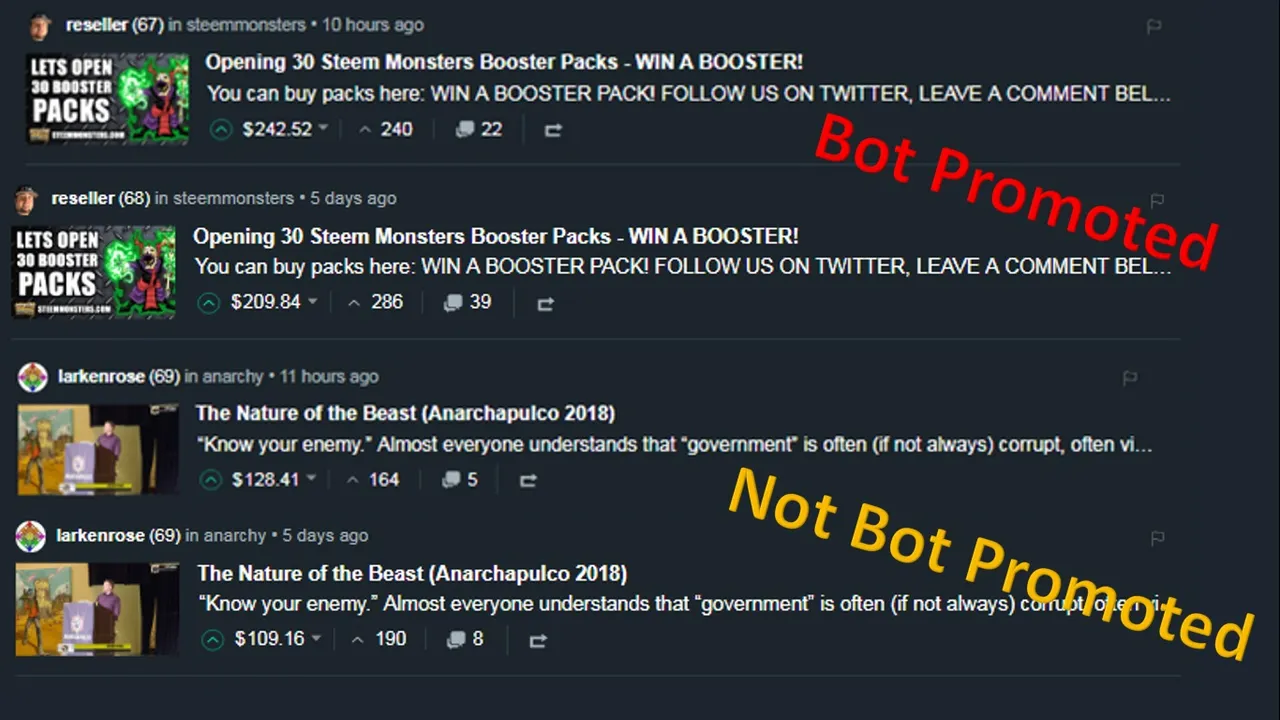
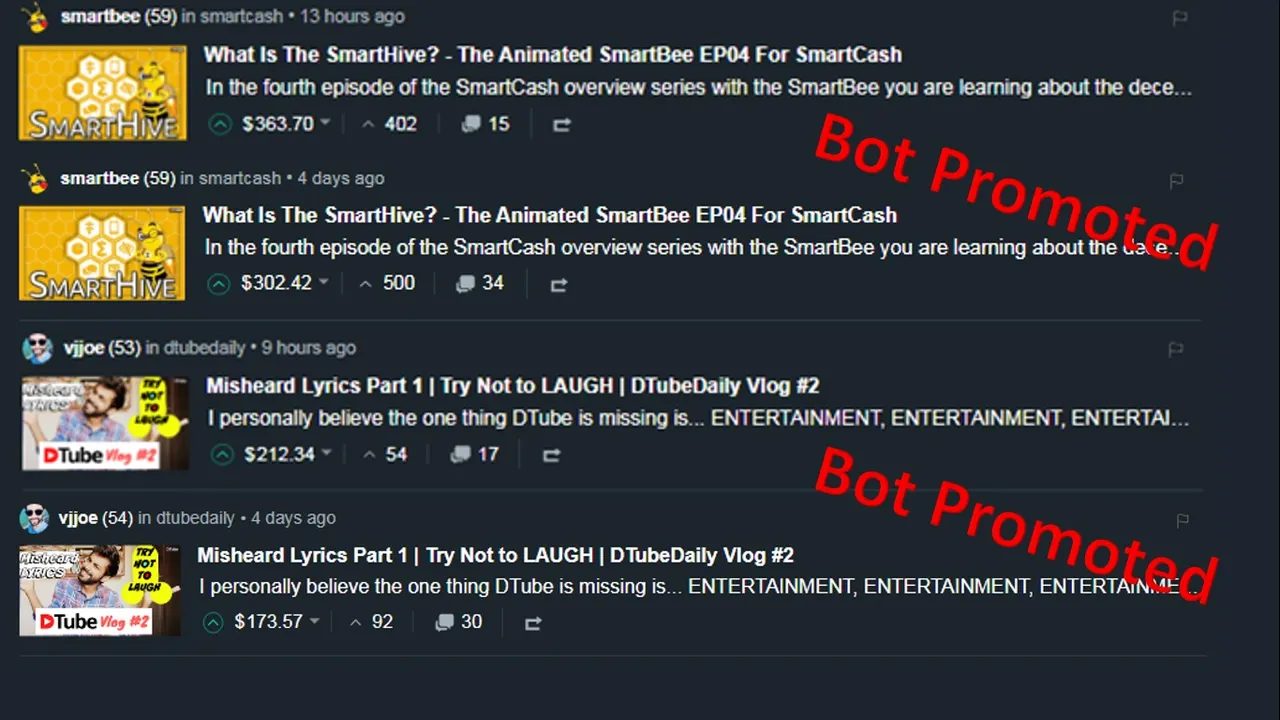
I was only able to follow 2 posts on the ‘sports’ tag as the tag is currently dominated by just a few accounts. The post I followed from @worldcup-russia experienced a large jump in the number of upvotes and comments. The rewards value still fell. This indicates to me that the post was not getting the attention of anyone, through the trending list, who was willing to support this post with a large upvote. In regards to upvotes and comments @worldcup-russia appeared to do slightly better than @bnbtravels123. @bnbtravels123’s post was upvoted by bid bots and @worldcup-russia’s post was not.

So far I have looked at popular tags that would require significantly high value upvotes to reach these trending list. Most content creators should be expected to target the less popular tags as they do not require such a large bid.
One of my favourite tags is economics. Unfortunately it is not a popular tag. I have followed four posts. All four posts appear to have failed to gain any high value upvotes. The number of upvotes for all four posts increased by less than 15%. These posts were not upvoted by bid bots.
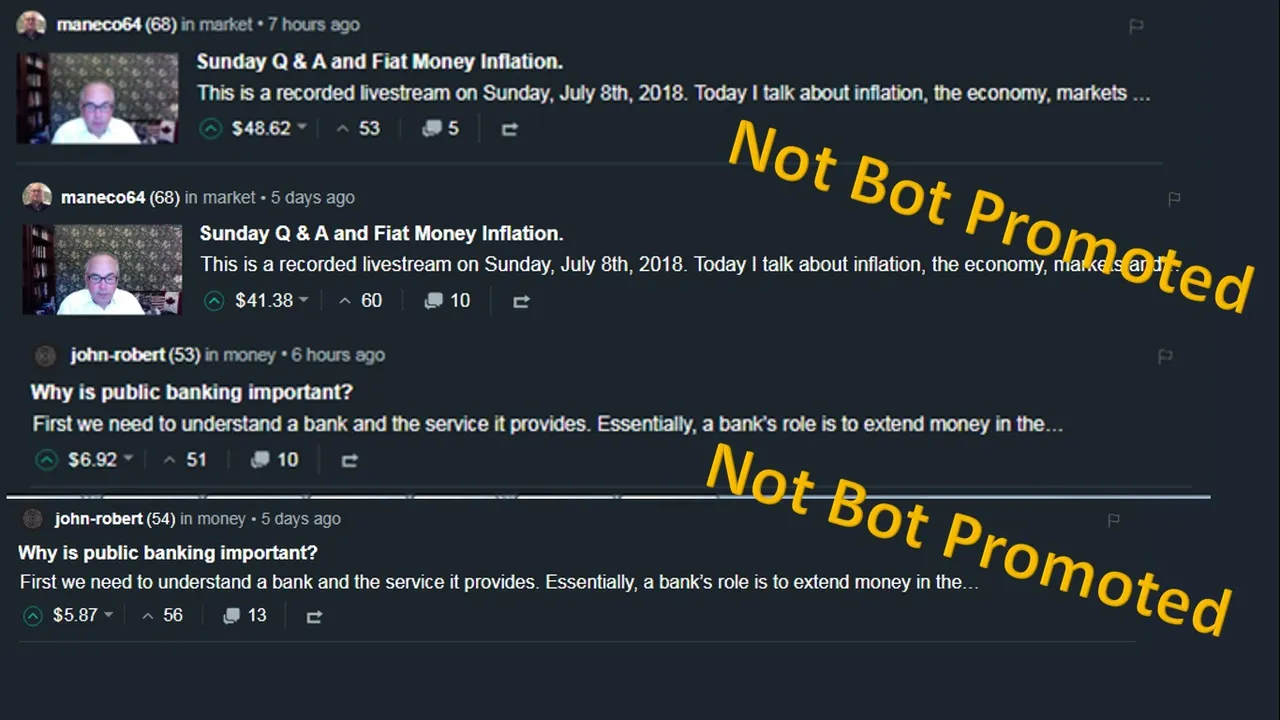

I have followed several more posts on less popular tags such as ‘literature’ and ‘jokes’. The increase in the number of upvotes is very small and rewards for all these posts fell. Two of the six posts I followed from these lists were upvoted by bid bots. The posts upvoted by bid bots again fared slightly worse than those not upvoted by bid bots.
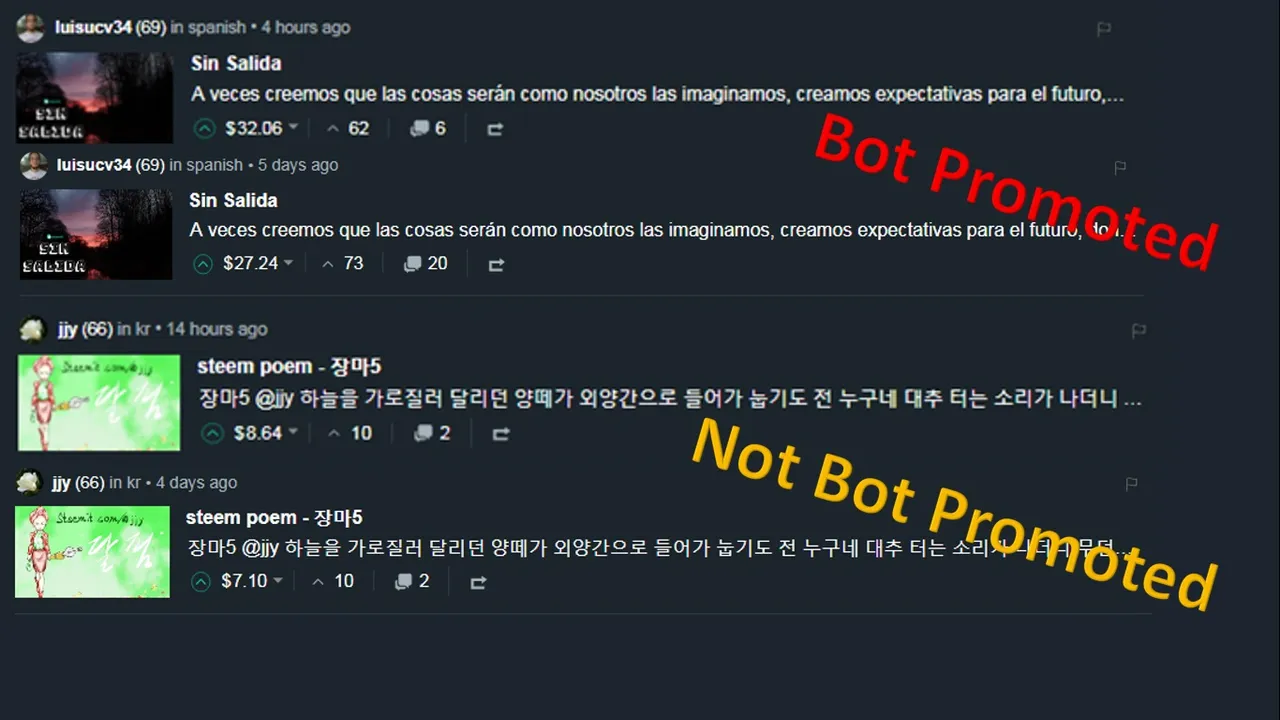


The research I have conducted above only presents a fairly narrow snapshot of the impact of reaching a tag trending list. The additional exposure could have resulted in gaining a few long-term followers that will increase the rewards for future posts. It is difficult to determine this number but the followers gained from observed posts have very little Steem Power or have chosen to give very low percentage upvotes. This snapshot indicates to me that minimal curation is taking place using the tags trending lists. The posts not upvoted by bid bots have performed slightly better than the posts upvoted by bid bots. This difference is very small and may have nothing to do with being on the trending list. Of all the posts I observed on the tag trending lists, I did not see any downvotes of any value. This is another indication of a lack of diligent curating.
Out of 28 posts, 11 of the content creators used bid bots. This number is reasonably high but not necessarily alarming.
The above snapshot paints a concerning picture but does not necessarily mean that we have reached a situation of market failure. Market failure will occur when good content creators leave or lower the standard of their content. This will happen when there is a greater incentive to produce lower quality content. If content is not noticed, the rewards for lower and high quality content will be similar. The cost of producing high quality is higher than the cost of producing lower quality content. As with the case with lemons and peaches, lower quality content will start to dominate the Steem platform. Are we seeing this happen now on Steem? The answer is still a little uncertain but there is a very good chance that it will happen if the number of curators keeps falling.
Front Page of Steemit
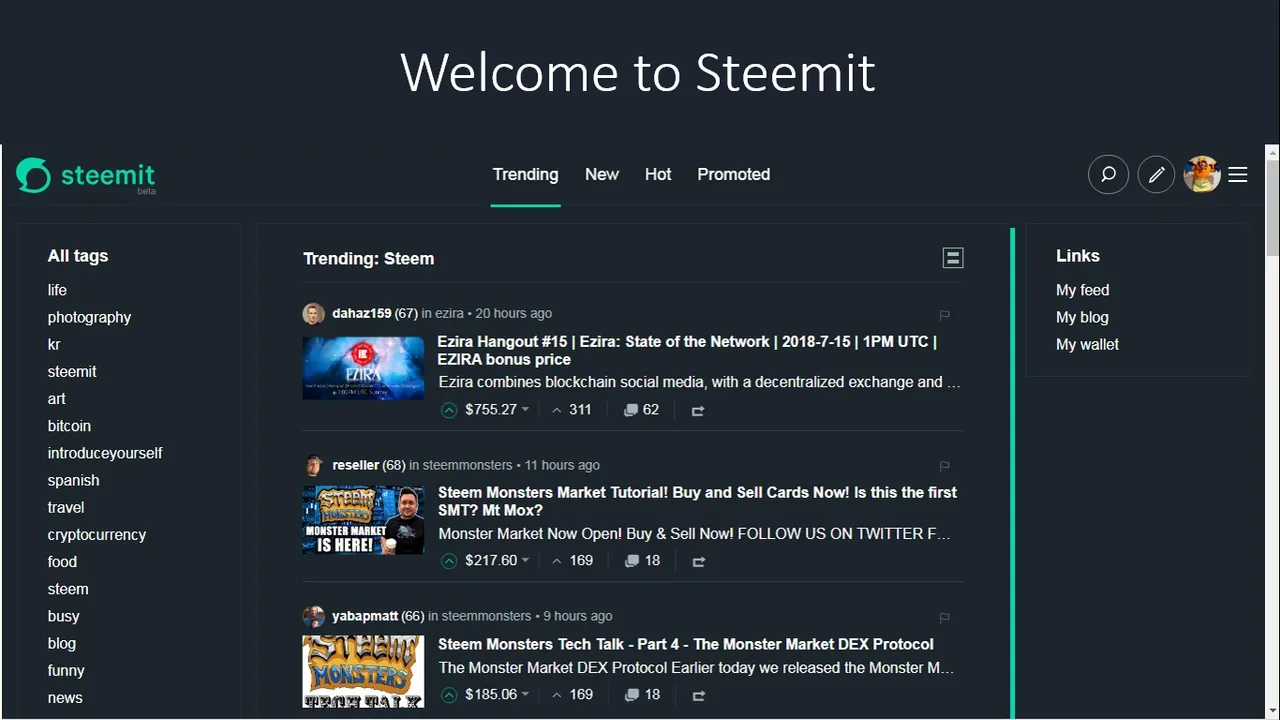
As I mention earlier in the post, the general ‘trending’ page is the front page of Steemit and busy.org. This is the page that potential and new users will most likely get their initial impression of the content on Steem. So how good is this content? This is a hard question to answer, so I will ask a different question. How popular is this content in the Steem community? The answer should be very popular, this content is on the top trending list on Steem. That answer, sadly, is not correct.
I looked at the top 10 posts on the Steemit trending list on 2 different days. I added the value of upvotes that I was able to attribute to bid bots for these posts. The first time I checked I found only one post in the top ten that did not use bid bots. The other nine were very heavily upvoted by bid bots. All nine posts had at least 80% of their value from bid bots. Of those nine, four had at least 90% of their value from bid bots. The post at the number one spot on trending had 98% of its value from bid bots.
I came back 2 to 3 days later and repeated the same exercise. This time round, all ten posts were heavily upvoted. One post received 50% of its value from bid bots. The other nine, had at least 80% of their upvotes from bid bots. There were four posts with over 90% of their value from bid bots. The post at the number one spot on trending had once again 98% of its value from bid bots. Nine of these ten posts were not in the top ten the first time I conducted this exercise, I could have waited a bit longer but I am a little impatient. I also checked the number of downvotes. A total of 13 downvotes were cast with a total value of less than 0.5. So no sizeable objections from the Steem community regarding these trending posts.
The evidence suggests to me that the posts on trending are not popular as the value of non-bid bot votes are very low compared to the value of the bid bot votes. At the time I am writing this post. The top post on trending subtract the bid bot votes has a value of 11.05. This value includes, the content creators self-vote as well as any automated upvotes. This post has not received any downvotes. This post is receiving the maximum amount of exposure possible on Steemit and is currently earning close to nothing from this promotion. What incentive is there to promote using bid-bots?
Returns on Investment

I mentioned earlier in this post, content creators can earn a return on investment (ROI) from bidding on bots. An approximation of the ROI is provided on bottracker.com. Bots were generally offering a slightly negative ROI. Content creators were hoping that they could more than recover this loss with upvotes gained from the additional exposure. As shown earlier in this post, extra exposure provides very minimal additional rewards. The fall in the price in Steem is causing many bidders to lose from their bid bot upvotes. It appears this has caused a drop in demand for bid bots. Many bot owners/operators have increased ROI on bot upvotes to attract more content creators to use the bots. This leaves us now with a situation where the only benefit of using a bid bot is to obtain a positive ROI. Combine this with the lack of curation, we have the strong making of market failure for quality content.
Market Capitalisation
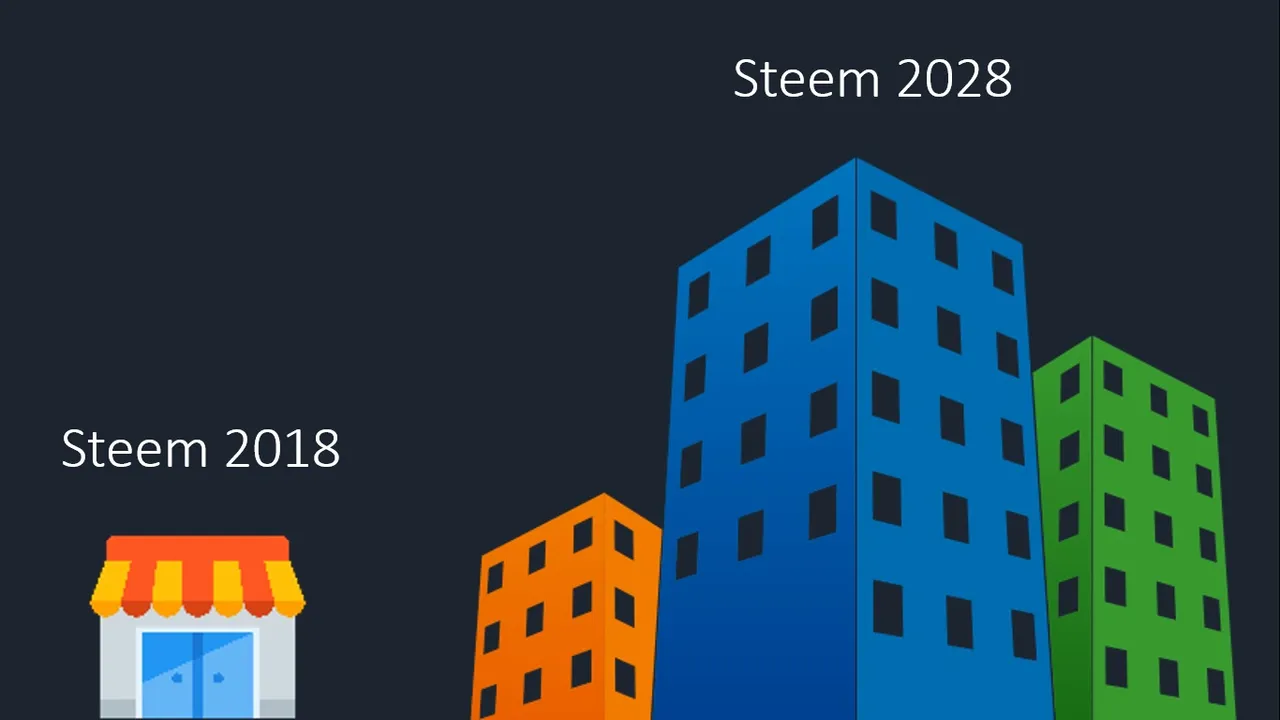
Market capitalisation is the supply of Steem multiplied by the price of Steem. The supply of Steem is constantly increasing. I believe it is increasing at about 8.8% per annum at the moment. This puts pressure on reducing the price of Steem. The Steem platform needs to generate sufficient value to overcome this downward pressure. To do this people need to be attracted to the platform. This attraction will bring in investment. This will put upward pressure on the price of Steem. If the upward pressure exceeds the downward pressure, the price of Steem will rise. In the short-run, this is generally very hard to see as Steem is subject to the whims of the cryptocurrency world. In the long-run, creating sufficient attraction to the Steem platform will push the price of Steem up. This benefits everyone on the platform. Those holding the most Steem Power will benefit the most from the increase in the price of Steem.
Many of the biggest investors have delegated much of their Steem Power to bid bots. Doing so helps them accumulate Steem but if this causes market failure in regards to high quality or popular content, the platform is hurt as a whole and the price of Steem will fall. The fall in price will most likely offset any gain in the quantity of Steem obtained from delegating to bid bots. The returns from delegating Steem to bid bots may appear high but may not even cover the cost of inflation caused by the generation of the rewards pool. The situation is quite circular. The generation of the rewards pool dilutes the stake of investors. Earning from delegating Steem Power from bid bots simply recovers Steem to compensate from the dilution effect of the rewards pool. The growth of the Steem platform will therefore be stunted. This in my opinion, is an example of adverse selection; by wanting more we have ended up with less.
How do we prevent all the above mentioned problems?
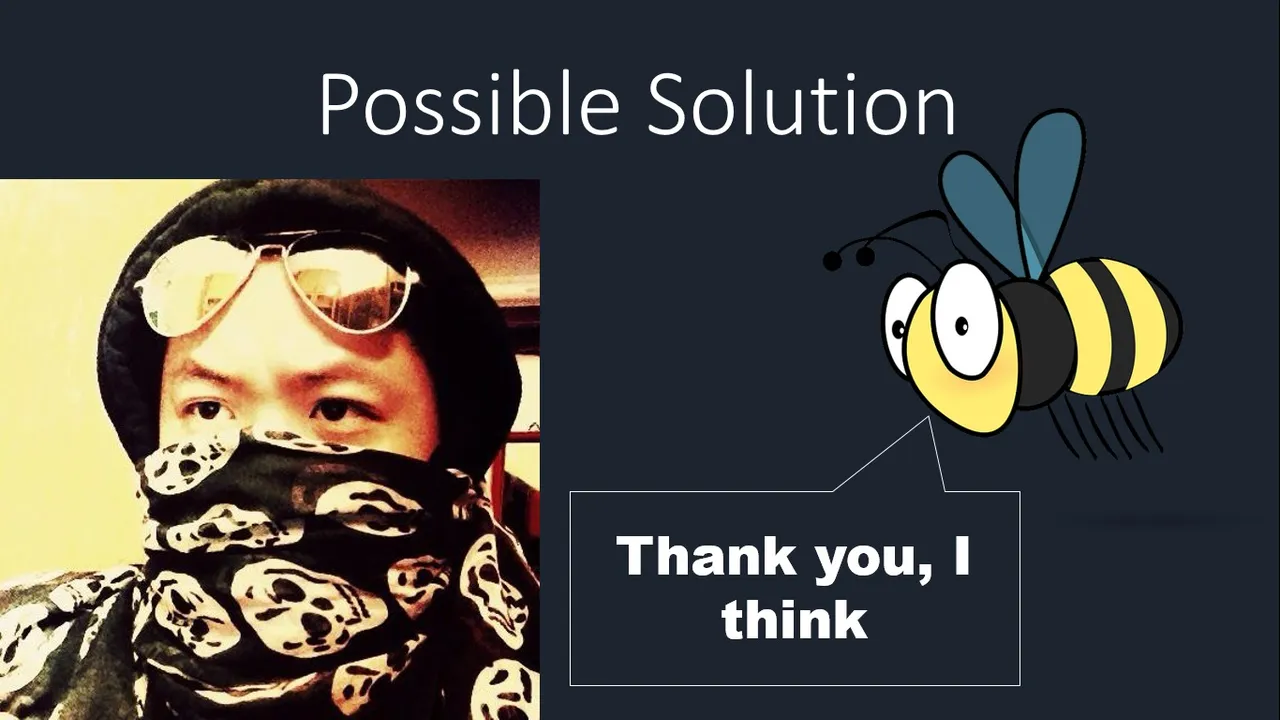
Let’s take a look at what we can do to reverse the current trend towards delegating to bid bots. Delegating to bid bots is currently the dominant strategy for investors. Using the bid bots is also currently the dominant strategy for content creators. Delegators to bid bots need to be presented with an alternative choice that can become the new dominant strategy. Several people are warming to the idea of increasing curation rewards to 50% of the post's payout (@honeybee recommended 50% curation rewards in December 2017, @kevinwong has raised this several sometimes in posts and comments, and @sweetsssj also recommended such a change in a conversation we had recently). Curation rewards are intended to be 25% of the value of the post. This is rarely the case. Upvotes in the first 30 minutes earn less than 25% of curation rewards. People can wait until 30 minutes, so that is not a big problem. The bigger problem is the broken SBD to US dollar peg.
This problem is very pronounced as the price of Steem and SBD increases. For example, if the price of Steem and SBD are both US$5 and a post has a payout value of 100, 5 Steem power ((100×0.25)/5) will go to curators and 7.5 Steem Power ((100×0.75)/(5×2)) and 37.5 SBD goes to the content creator. The curators earn US$25 and the content creator earns US$225. The curators receive 10% and not 25% of the payout of the post. If the SBD to US dollar peg was working, the curators would earn US$25 and the content creators would earn US$75. So is the broken peg substantially benefiting content curators? In the short-run, yes. In the long-run, no. Increasing the supply of SBD puts downward pressure on the price of both SBD and Steem. The very low curation rewards makes delegating to bid bots very attractive when the price of Steem and SBD is higher. The number of bid bots increased dramatically in early 2018 when the price of Steem started to soar. The price of Steem has fallen but that does not appear to have reduced the extent of delegation to bid bots.
Let’s revisit the 50% curation rewards idea. 50% curation rewards is only going to be an effective long-run solution if the SBD to US dollar peg problem is resolved. Pegging SBD to the US dollar is not at as easy as it may sound. Demand and supply are constantly exerting forces on the price. This force needs to be counteracted with changes to the supply of SBD in circulation. We see banks do this with paper fiat money. The rising price of Steem further complicates this as more pressure is put on the price of SBD. If SBD cannot be pegged, another solution could be to payout rewards in just Steem and Steem Power. This will allow the curation rewards to remain stable at 50%. This will also give people a legitimate choice of a 100% Steem Power payout. SBD should also be easier to peg if it is not given out as part of the post’s payout. Therefore, if the peg can be maintained, SBD can still maintain its function of hedging against the risk of the fluctuating price of Steem.
Curation reward of 50% will have an impact on the bid bots. The bid bots will not be able to collect as much from bidders in order to maintain their ROI (ROI includes the cost of curation). If we assume bot owners/operators to keep curation rewards from bid bots upvotes, the returns to delegators will be similar to the 50% curation rewards offered by organically curating. I believe it is most likely that bid bot owners will offer curation rewards to delegators to try and offer a better deal than 50% curation rewards but it is unlikely that this deal will be that much better.
Curation rewards of 50% also opens the door for investors to delegate to curators for improved manual curation. There is more scope for delegators and curators to agree on how to split curation rewards. Delegators will want returns on their investment and curators will want returns on their effort to genuinely curate (I explain what I believe is genuine curation early in this post). There is much more to go around with 50% curation rewards.
Other suggestions

Some of the bid bots have blacklists to reduce the amount of spam getting upvoted. These lists are starting to get very long. It is also quite likely that the number of spam accounts are growing just as fast as the lists. Those producing low quality content are generally not included on these blacklists. I believe a better idea is have a whitelist. @smartsteem and @minnowbooster have such initiatives. Collaboration amongst bid bot owners/operators could help create a universal whitelist. Bot usage could then be limited to only those that make the whitelist. This would lower demand for bid bots and reduce the amount of Steem Power tied up in bid bots. This idea would be far more effective if combined with the 50% curation idea as investors are presented with another alternative to earn Steem if whitelisting restricts demand for bid bot services.
Areas not discussed in this post

This post focuses on bid bots and the effect they might be having on the Steem platform. This post does not cover off on other issues such as voting trails, self-voting, curation circles and automated upvoting, which also have a negative effect on the available Steem Power for genuine curation. I believe the bid bot effect on curation as well as the image of the Steem platform is a more pressing and possibly an easier issue to address. I have some ideas regarding the other issues, which I would prefer to address in another post.
Conclusion

In this post I have tried to present a balanced view of the current bid bot situation. Bid bots can play a valuable role on the Steem platform if used in moderation and for promotion purposes rather than to a make a few quick dollars from low quality easy to produce content. It is difficult to assess exactly the optimal amount of Steem Power to be tied up in bid bots but evidence seems to suggest that at the moment there is too much. There does not appear to be sufficient genuine curation of content to allow the best and most popular content to rise organically to the top of the trending lists.
To fix this problem other opportunities need to be made available to investors. The best idea I have heard so far is to increase curation rewards to 50%. This will only be effective if this a stable 50% and not reduced by the increase in the price of SBD. I strongly believe after these changes are put in place, the quality of the most visible content will improve. This should also improve the image of Steem from the perspective of outside observers and hopefully encourage more content creators as well as investors to the platform.
Thank you for taking the time to read this post. I appreciate your comments and feedback regarding all I have discussed in this post.
Here is a link to my prisoner’s dilemma post
Game Theory #2 – Prisoner’s Dilemma
Here is a link to my previous post on bots
Here is a link to @honeybee’s post, which proposed 50% curation rewards back in December 2017
Here is a link to @kevinwong’s post regarding curation rewards
Amazing profit potential! Here's how to earn a whopping $8,500 per year by locking up $250,000!
